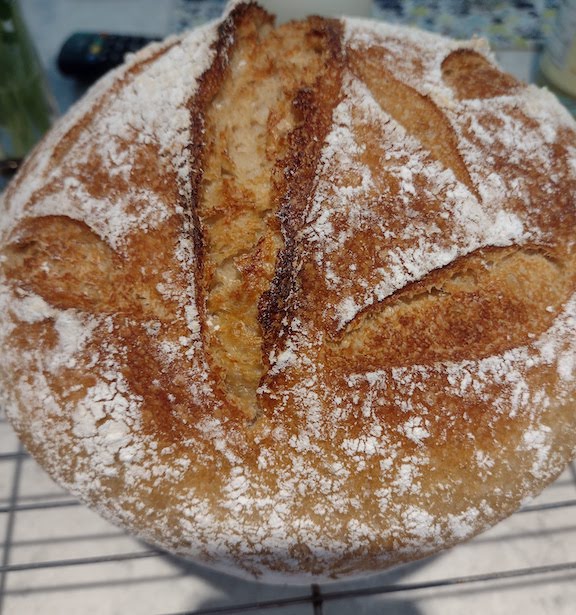
Ricotta Sourdough Rolls

Grilling season is upon us so I needed to make some soft tasty rolls for burgers. These are pretty straight forward and ended up just as I expected.
I used a combination of freshly milled and double sifted Butlers Gold whole wheat flour from Barton Springs Mill and KAF bread flour plus some KAF AP in the starter. Softened butter along with the ricotta cheese really added to the softness of the crumb and the honey added just enough sweetness to pull it all together.
I use some everything bagel topping on some and toasted onions as well as poppy seeds on others.
Give these a try and I am confident you won’t be disappointed.
Formula
Levain Directions
Mix all the levain ingredients together for about 1 minute and cover with plastic wrap. Let it sit at room temperature for around 7-8 hours or until the starter has doubled. I usually do this the night before.
Either use in the main dough immediately or refrigerate for up to 1 day before using.
Main Dough Procedure
Mix the flours and water together in your mixer or by hand until it just starts to come together, maybe about 1 minute. Let it rest in your work bowl covered for 20-30 minutes. After 30 minutes or so add the salt, starter (cut into about 7-8 pieces), ricotta cheese, softened butter and honey and mix on low for 5 minutes. (If using the Ankarsrum you can mix for around 12-15 minutes on medium low). Remove the dough from your bowl and place it in a lightly oiled bowl or work surface and do several stretch and folds. Let it rest covered for 10-15 minutes and then do another stretch and fold. Let it rest another 10-15 minutes and do one additional stretch and fold. After a total of 2 hours place your covered bowl in the refrigerator and let it rest for 12 to 24 hours.
When you are ready to bake remove the bowl from the refrigerator and let it set out at room temperature still covered for 1.5 to 2 hours. Remove the dough and shape into rolls around 125 -150 grams each. Cover the rolls with a moist tea towel or plastic wrap Sprayed with cooking spray and let rise at room temperature for 1 1/2 – 2 hours.
Around 45 minutes before ready to bake, pre-heat your oven to 500 degrees F. and prepare it for steam. I have a heavy-duty baking pan on the bottom rack of my oven with 1 baking stone on above the pan and one on the top shelf. I pour 1 cup of boiling water in the pan right after I place the dough in the oven.
Right before you are ready to put them in the oven, use an egg wash and add your toppings. Next add 1 cup of boiling water to your steam pan or follow your own steam procedure.
After 1 minute lower the temperature to 425 degrees. Bake for 25 minutes or until the rolls are nice and brown.
Take the rolls out of the oven when done and let them cool on a bakers rack for as long as you can resist.









